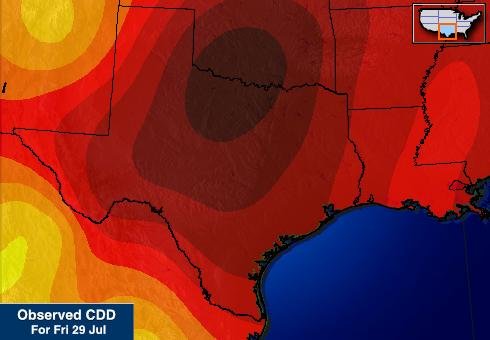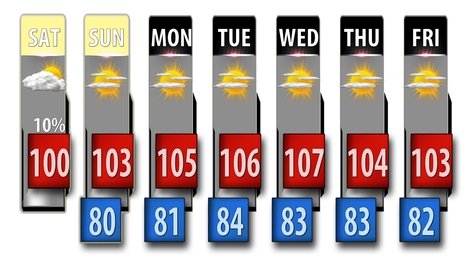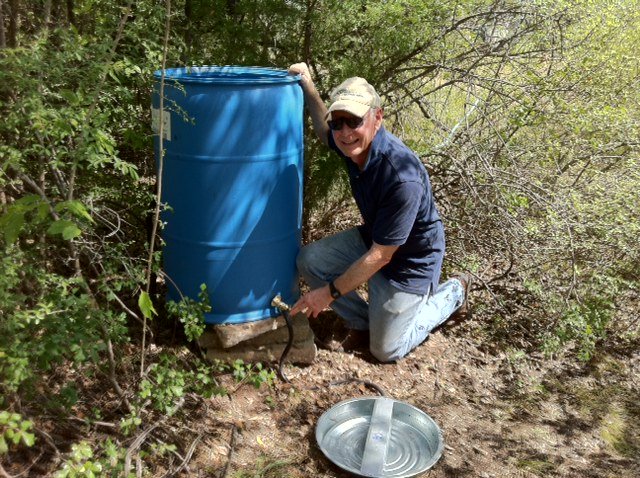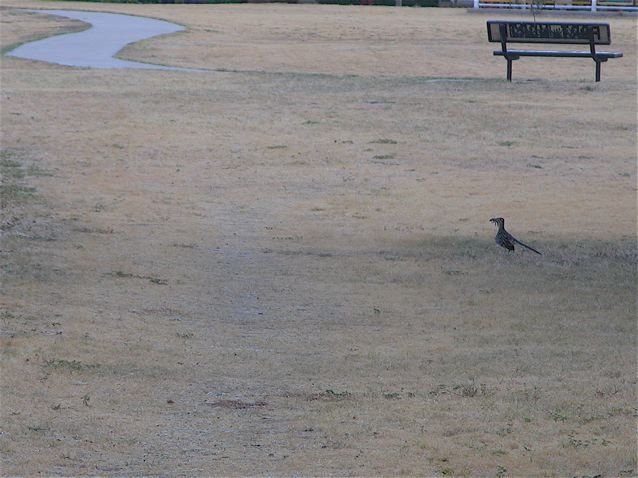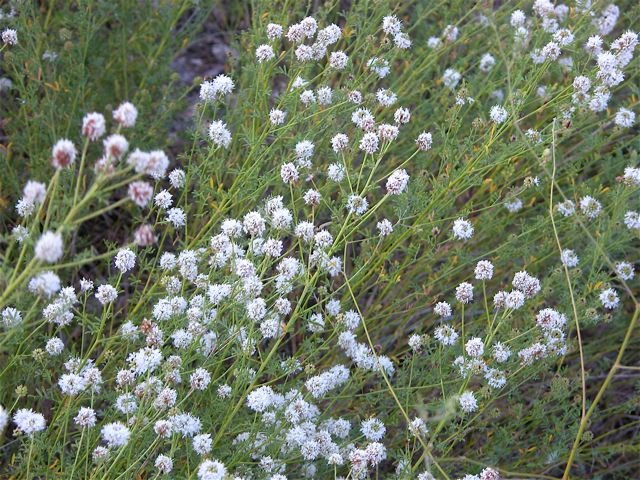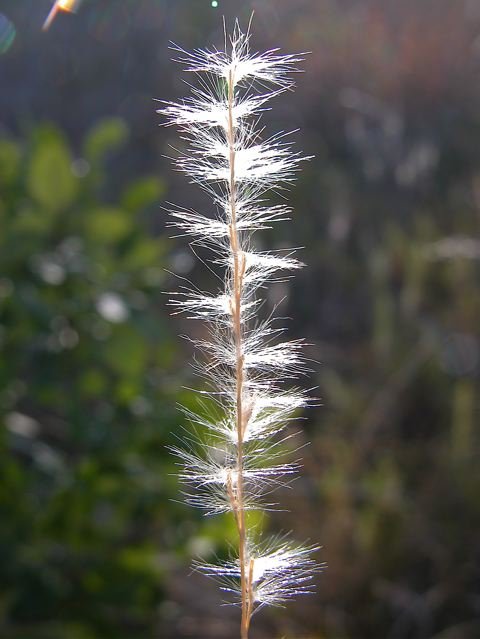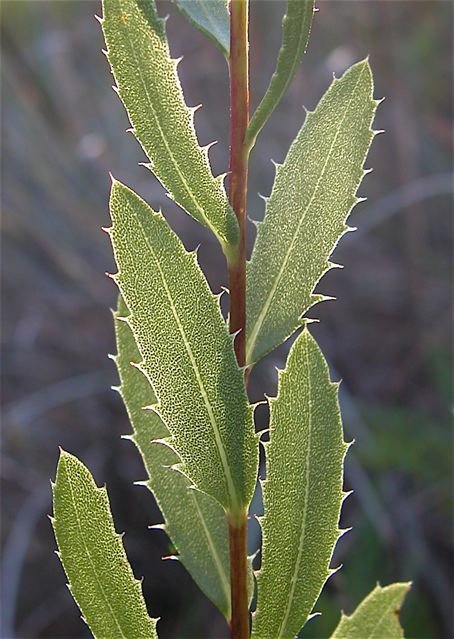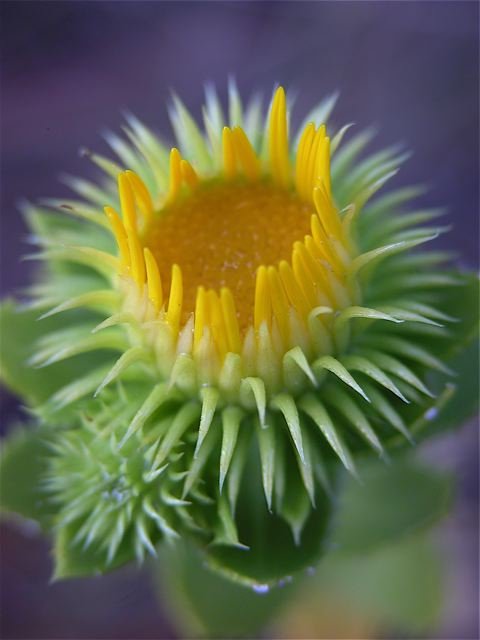PRAIRIE NOTES #56: Fashionably Brown
Prairie Notes are monthly photo/journal observations from Tandy Hills Natural Area by Founder/Director, Don Young. They include field reports, flora and fauna sightings, and more, mixed with a scoop of dry humor and a bit of philosophy. They are available free to all who get on the FOTHNA email list.
Fashionably Brown
Prairie Notes: #56
August 1, 2011
1) Fashionably Brown
2) Water for Wildlife
3) Field Report
4) Wildflower of the Moment
5) The Ed Abbey of Concord
6) Preserving Prairie: Bill Holston
7) Obituary: Anne LaBastille
8) Prairie Plant Puzzler
9) Mea Culpa
10) Prairie Proverb
1) Fashionably Brown
According to fashion forecasters, brown will be the "IN" color this Fall. Thanks to a near-record drought, a visit to Tandy Hills Natural Area will give you a preview of the Fall collections. The current, monochromatic palette of the prairie gives new meaning to the aphorism, "suffer for fashion."
The Summer, 2011, prairie is dressed in hazel, beige, sepia, tan, caramel, buff, chestnut, umber, burnt umber and burnt everything else. (About the only thing that's still green are the invasive species that are always out of style.) Nary a drop of water fell from the July sky. Under a blazing ball of hydrogen, the grassland looks and sounds like a catwalk of cornflakes.
Unbelievably, most people opt out of hiking Tandy Hills in the Summer, preferring to chill out in the AC with the TV, FB, NPR, NYT or to catch a few Z's. To others, born and raised in the 1950's when drought was spelled with a capital "D", the out of doors beckons like a secret lover. Blessed with the DNA of lizards, we boldly go in search of solitude, signs of life and the knowledge of AC when we get home.
How else to fully appreciate the endurance and adaptability of native wildflowers, grasses and wildlife over millennia than, in situ. Besides, even in a drought, hidden pleasures await those who have stopped looking and started seeing.
But before you go, recall the wise words of, the Thoreau of the American West:
"Enter at your own risk. Carry water. Avoid the noon-day sun. Try to ignore the vultures. Pray frequently."
--Ed Abbey
DY
2) Water for Wildlife
All fashion fun aside, drought is serious business for the wild things that live at Tandy Hills. Due to the severity of the drought, even the natural water holes in the creek bottoms have dried up. You know things are bad when you find a Roadrunner in the birdbath nearly every day and Cottontail rabbits risk death by SUV to cross the road for a drink every evening. These and other wildlife are caught in limbo between truly wild nature and a managed city park. Survival of the fittest only makes sense when the game is fair, the playing field level and an escape route is within reach. Such is not the case at Tandy Hills.
Surrounded by neighborhoods and I-30, the only water choices are across or under the highway or into the neighborhoods. There is a storm drain under the highway that connects with the Trinity River but it's not a practical solution for many of the smaller animals. In an experiment to help ease the suffering of these creatures, Friends of Tandy Hills Natural Area has intervened.
As of July 30, a fresh water source is now in place, hidden from public view in a shady copse. Jim Marshall came came up with this quick solution that is already serving its intended purpose. A 55-gallon barrel of fresh water is connected to a gravity-fed, float-operated pet bowl. The biggest problem was getting 400 pounds of water to the park and in the barrel. Because there is no water line at the park, we had to truck in a second barrel of water and, using a long hose, drain it into the drum hidden in the trees.
As we installed the water source a Roadrunner eyed our progress from a few feet away. So far so good.
3) Field Report
- If you come to Prairie Notes looking for pretty wildflower pics you may want to check back next March. Only a few stray wildflowers could be found in early July: One or two Greenthread stalks, a few bug-eaten Texas Bluebells and some surprisingly vigorous-looking Two-leafed Senna. As of mid-July, White Prairie Clover, still looked pretty good but has started to fade at the end.
- Tall and lanky, False Gaura, seems unaffected by the Summer heat, waving back and forth in the gentlest of breezes. In late-July I saw a few nice stands of purple-tipped, Gayfeather (Liatris sp.) but many stands are struggling to bloom in the furnace-like weather.
- Dragonflies are a sure sign that hot days have arrived. They are very active in late July, occasionally swarming over the grassland. I spent a pleasant afternoon watching a hungry Roadrunner "fish" them right out of the air with its beak.
- Ignoring the heat and reminding us that Fall is on the way, Snow-on-the-Prairie, is emerging through the cracked soil with its baby-soft, pale green leaves.
- Fall-blooming grasses, with their extra long root systems are highly adapted to cope with drought. Most of the Spring growth of Little Bluestem and others has been arrested and turned bronze but some plants, apparently fed by seeps, appear remarkably fresh.
- Silver Bluestem (Bothriochloa laguroides ssp. torreyana) has spent its seeds but provides a striking silhouette in the late afternoon sun. Kiowa Indians used the stems as toothpicks.
4) Wildflower of the Moment
One of the few traces of bright color at Tandy Hills in July is the, less than exotic, Saw-leaf Daisy (Grindelia papposa) is viewed by many as nothing but a weed. It's so tough not even cattle will eat it. Despite its weed-like appearance, there's no denying it's adaptability to drought and usefulness to insects. It is also, sometimes used medicinally to treat skin irritations such as poison ivy rash. Another of its common names is, Spanish Gold. When seen in certain light, it is, indeed, dazzling.
5) The Ed Abbey of Concord
July 12, 1817 was Henry David Thoreau's birthdate making it all the more appropriate that my Summer reading list is stacked with books celebrating one of our great American heroes. The more I read the more amazed I am at how relevant his words and ideals are today. Herewith, a couple of good reads about the "Ed Abbey of Concord."
> My latest discovery, a gift from my daughter Mimi, is the self-descriptive title, The Thoreau You Don't Know, by Robert Sullivan, 2009. In it you will learn that there is much more to Thoreau than Walden. Of particular interest to me was an interesting anecdote of how, but for a simple twist of fate, Thoreau might have been known for grassland prairies rather than the Walden woods. It goes like this: During the recession of 1838, Henry's brother, John, encouraged him to go west and find a teaching job. They lived in Concord, Massachusetts so, west would have been the midwest, where the great American prairie had not yet been plowed under.
In a letter to his brother, Henry wrote, "It's high season to start. The canals are now open, and traveling comparatively cheap. There's nothing like trying."
Alas, Henry went instead to Portland, Maine where he was like a fish out of water, retuning shortly back to his comfort zone of the Walden woods. I can't help but imagine that, had he got there, Thoreau would have been greatly inspired by the prairie. Despite the meditative quality of the deep woods of Massachusetts a prairie has far more diversity and interest. Imagine what might have been, if he had followed his brother's advice.
> Thumbing Through Thoreau, (2010) is a handy collection of aphorisms taken from Thoreau's various writings. Compiled by Kenny Luck and beautifully illustrated by Jay Luke and Ren Adams, the book is a kind of, one-stop-shopping, when looking for just the right quote. The books 320 pages are divided into categories of quotations on the subjects of Society & Government, Spirituality & Nature and Love. Available in hard copy or download. Check out the cool, promo-video on the website that walks you through the book.
6) Preserving Prairie: Bill Holston
If all north Texas lawyers were like Bill Holston, the Lone Star State would be a much better place to live. I recently became acquainted with, Bill, a Dallas attorney who also writes a nature column for D Magazine called, Law Man Walking. Bill and I see eye-to-eye when it comes to preserving what's left of the native landscape. Check out his commentary titled, Preserving Prairie that aired on KERA radio in late July. It's like a breath of fresh air.
Bill Holston
7) Obituary: Anne LaBastille
For the second month in a row, an esteemed heroine of the environment has passed. Anne LaBastille, who died July 1, was no ordinary woman. In many ways her life paralleled Thoreau's. In 1965 she built a tiny log cabin next to a lake in a remote area of the Adirondack Mountains, where she lived alone until 2008. The cabin had no electricity, telephone or plumbing. Ms. Bastille, who had a Ph.D. in Wildlife Ecology authored 16 books including her four-volume Woodswoman memoirs, more than 150 magazine articles and dozens of scientific papers. When not in her cabin, she travelled the world on a mission to preserve wilderness. She made a difference.
"Sometimes I sit in my log cabin as in a cocoon, sheltered by swaying spruces from the outside world... Life seems to have no beginning and no ending. Only the steady expansion of trunk and root, the slow pileup of duff and debris, the lap of water before it becomes ice, the patter of raindrops before they become snowflakes. Then the chirp of a Swallow winging over the lake reminds me that there is always a new beginning."
Links:
http://www.adirondackdailyenterprise.com/page/content.detail/id/525384.html
http://www.adirondackalmanack.com/2011/07/remembering-anne-labastille.html
http://articles.latimes.com/2011/jul/10/local/la-me-anne-labastille-2011...
http://www.nytimes.com/2011/07/10/nyregion/anne-labastille-environmental...
8) Prairie Plant Puzzler
Do you know me? Unlike most of my grassy sista's and bro's, I hang out in the dark, shady bottomland of Tandy Hills. That's where I'm most likely to get my feet wet, which makes me a happy camper. My exotic leaves may remind you of invasive bamboo but I'm all native, honey. >wink< It's my lovely seeds that'll catch your eye and make you sigh. And your heart will flutter when you see how my spangles dangle in the slightest breeze. What's NOT to love about me? Heck, I'm low maintenance, too.
(Be the first to guess my name and win a beautiful, organic cotton Tandy Hills bandana that'll blow your mind AND your nose.)
Stumped by the July puzzler? Answer: American Basketflower (Centaurea americana)
What's my name?
9) Mea Culpa
In Prairie Notes #55 I mistakenly ID'd a Passionflower (Passiflora lutea) as Purple Leatherflower (Clematis pitcheri). In nearly 40 years of hiking THNA I've never seen a Passionflower, but the facts are self-evident. Thanks to John Snowden and Misti Little for catching my error.
Passionflower leaf. THNA, July, 2011
10) Prairie Proverb
"Planets are made from interstellar dust, and so are all creatures on all planets. We are made of interstellar dust, ultimately."
Not quite as poetic as Joni Mitchell, but, Michael Barlow, astronomer at University College London, quoted in a recent news article about colossal quantities of cosmic dust just recently detected after a supernova that occurred 160,000 years ago.
All content by Don Young unless otherwise noted.



